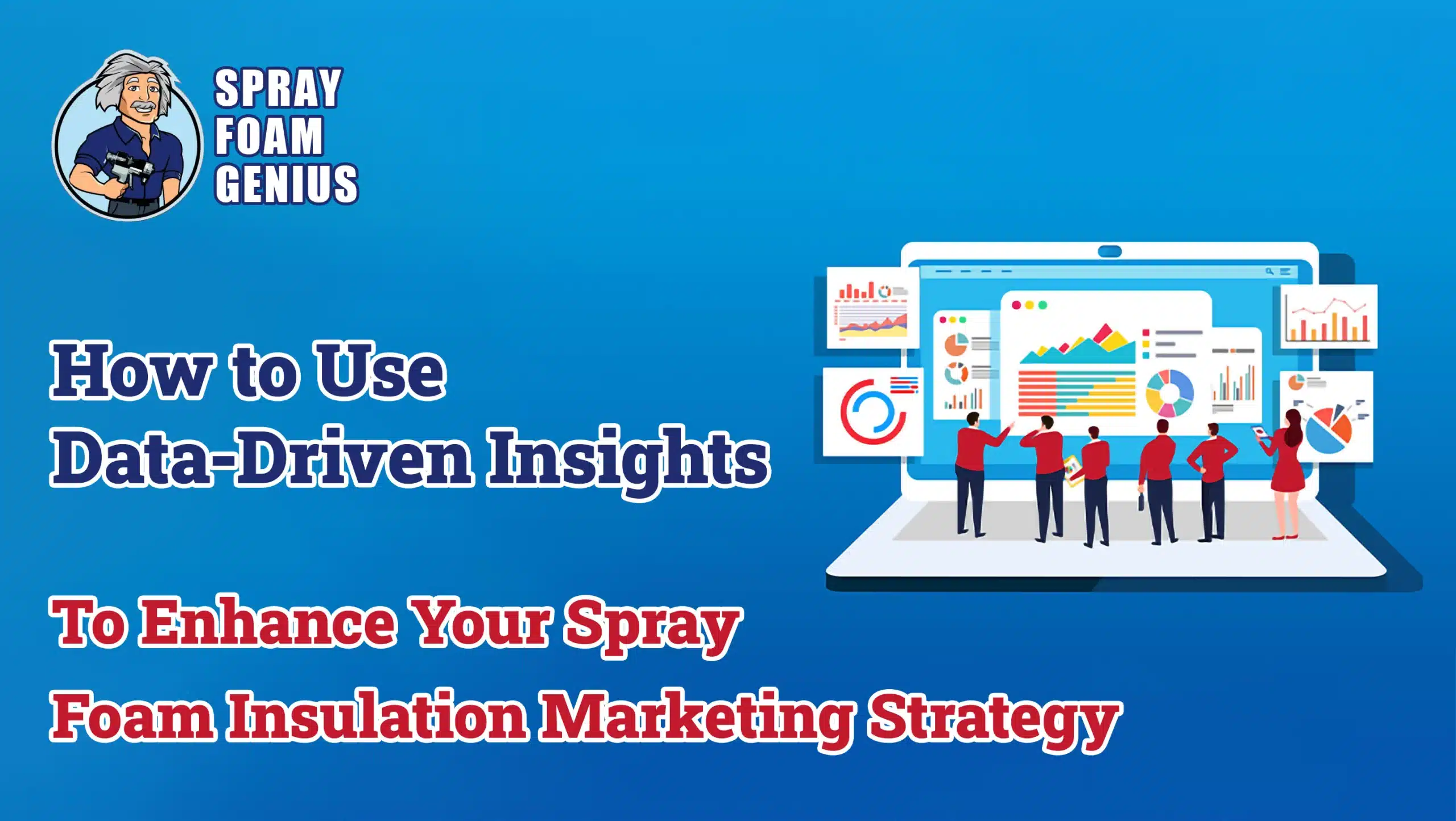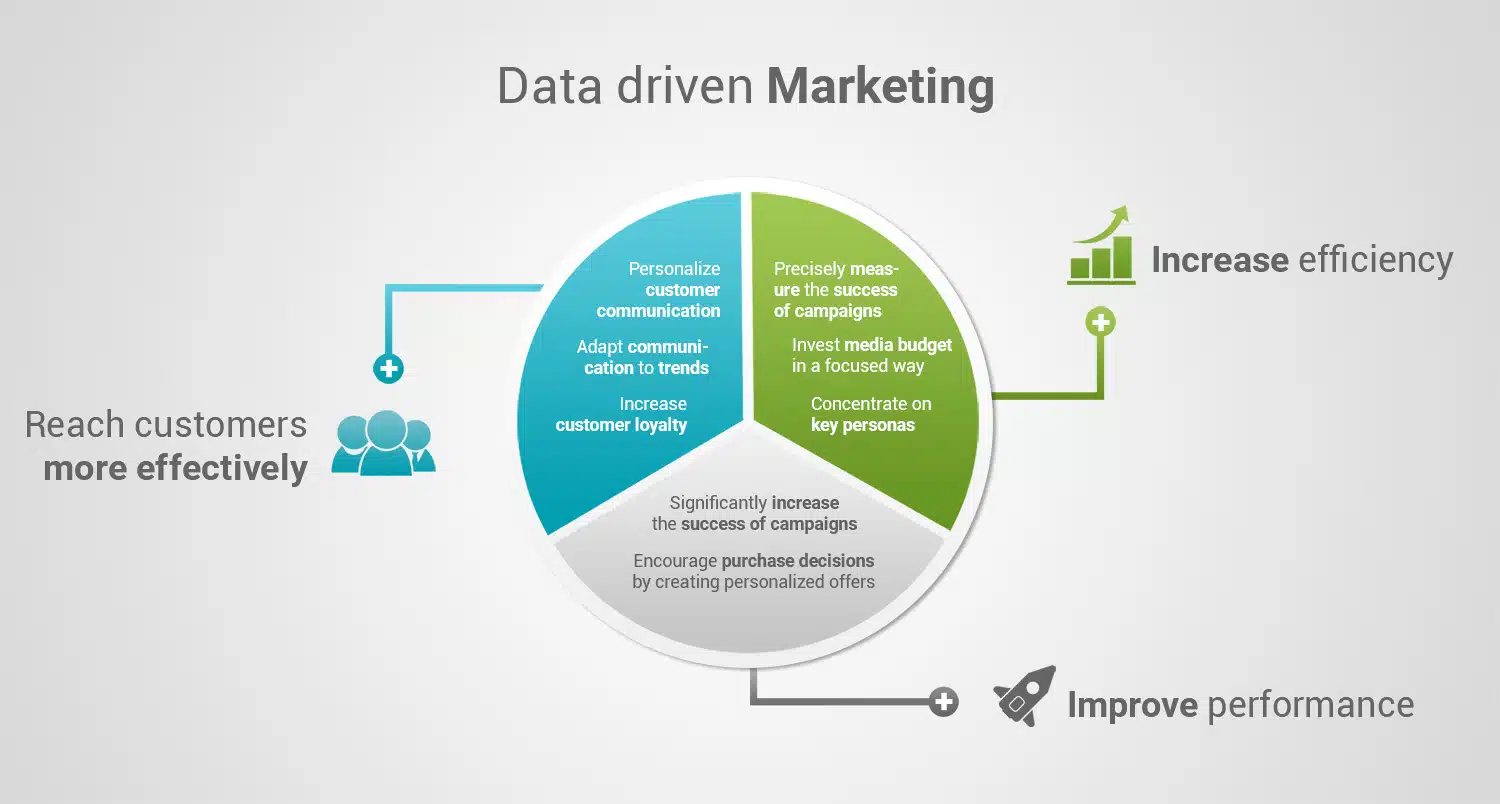
In today’s competitive landscape, data-driven marketing is not just an advantage—it’s a necessity. For spray foam insulation contractors, leveraging data can transform your Spray Foam Insulation Marketing Strategy, enhance customer engagement, and ultimately drive business growth. This comprehensive guide will delve into how you can use data-driven insights to refine your marketing approach, focusing on analytics, metrics, and actionable strategies tailored to your industry.
The Significance of Data-Driven Marketing
What is Data-Driven Marketing?
Data-driven marketing revolves around using data and analytics to guide marketing strategies and decisions. Unlike traditional methods that rely on intuition or historical trends, data-driven marketing uses real-time data to make informed decisions. For spray foam insulation contractors, this approach means better understanding your customers, optimizing marketing channels, and improving overall campaign effectiveness.
The Importance of Data for Spray Foam Insulation Contractors
For spray foam insulation businesses, data provides insights into various aspects of your marketing strategy, including customer behavior, market trends, and campaign performance. By harnessing these insights, you can:
- Enhance Targeting: Tailor your marketing efforts to reach the right audience.
- Improve Efficiency: Optimize resource allocation based on data-driven results.
- Increase ROI: Measure and boost the effectiveness of your marketing investments.
Key Data Sources for Spray Foam Insulation Marketing
1. Website Analytics
Your website serves as a central hub for customer interactions and data collection. By utilizing tools like Google Analytics, you can gain valuable insights into:
- Traffic Sources: Determine where your visitors are coming from—whether it’s search engines, social media, or direct traffic. This helps you understand which channels are most effective.
- User Behavior: Track how visitors navigate through your site, which pages they visit, and where they drop off. This information can highlight areas for improvement.
- Conversion Metrics: Measure how many visitors complete desired actions, such as filling out a contact form or requesting a quote. This helps gauge the effectiveness of your calls to action.
2. Google My Business Insights
Google My Business (GMB) provides crucial data about how customers interact with your business listing:
- Search Queries: Discover the terms and keywords people use to find your business. This insight can inform your SEO strategy and keyword targeting.
- Customer Actions: Analyze how many people click through to your website, request directions, or call your business. This data helps you understand the effectiveness of your GMB profile.
- Reviews and Ratings: Monitor customer feedback and ratings. Positive reviews can enhance your reputation, while negative feedback provides areas for improvement.
3. Social Media Analytics
Social media platforms offer rich data about your audience’s engagement with your content:
- Engagement Metrics: Track likes, shares, comments, and overall engagement with your posts. This helps identify what content resonates most with your audience.
- Audience Demographics: Understand the age, gender, and location of your followers. This information can guide content creation and targeting strategies.
- Content Performance: Evaluate which types of posts (e.g., videos, infographics, articles) generate the most interaction and adjust your content strategy accordingly.
4. Email Marketing Analytics
If you use email marketing, analytics can reveal the effectiveness of your campaigns:
- Open Rates: Measure how many recipients open your emails. This helps assess the effectiveness of your subject lines and email content.
- Click-Through Rates: Track how many people click on links within your emails. This indicates the relevance and appeal of your content.
- Conversion Rates: Determine how many email recipients take action, such as requesting a quote or scheduling a consultation. This helps evaluate the overall impact of your email campaigns.
Analyzing Data to Refine Your Marketing Strategy
1. Identifying Target Audience Segments
Data helps you segment your audience based on various factors such as demographics, behavior, and interests. By understanding different segments, you can tailor your marketing messages to address their specific needs and preferences. For example:
- Demographic Data: Identify which age groups or genders are most interested in spray foam insulation.
- Behavioral Data: Understand how different segments interact with your website and content.
- Geographic Data: Tailor your marketing efforts to target specific regions or local markets.
2. Optimizing Marketing Channels
Different marketing channels yield different results. Data analysis helps you determine which channels are most effective for your business:
- SEO: Analyze search engine traffic to optimize your website’s content and improve your rankings for relevant keywords.
- PPC Advertising: Evaluate the performance of paid ads to identify the best-performing keywords, ad placements, and targeting options.
- Social Media: Assess which platforms drive the most engagement and adjust your strategy to focus on the most effective channels.
3. Enhancing Content Strategy
Data-driven insights can guide your content creation efforts:
- Keyword Research: Use data to identify high-performing keywords relevant to spray foam insulation. This helps you create content that ranks well in search engines and attracts the right audience.
- Content Topics: Analyze search queries and engagement metrics to determine what topics are most relevant to your audience. This ensures your content addresses their interests and needs.
- Content Formats: Evaluate which types of content (e.g., blogs, videos, infographics) generate the most interaction. Use this information to diversify your content strategy and engage your audience more effectively.
4. Improving Conversion Rates
Understanding user behavior on your website helps optimize conversion rates:
- A/B Testing: Conduct A/B tests to compare different versions of your website pages or ads. This helps identify which variations perform better and refine your approach accordingly.
- User Journey Analysis: Map out the user journey to identify and address friction points that may cause drop-offs. This ensures a smoother experience for visitors and increases the likelihood of conversions.
Implementing Data-Driven Marketing Strategies

1. Setting Clear Objectives
Before diving into data analysis, define your marketing objectives. Clear goals help focus your efforts and measure success effectively. Common objectives for spray foam insulation contractors might include:
- Increasing Website Traffic: Drive more visitors to your site through improved SEO and targeted advertising.
- Generating More Leads: Enhance lead generation efforts by optimizing landing pages and calls to action.
- Boosting Brand Awareness: Increase visibility and recognition within your target market through strategic content and social media campaigns.
2. Utilizing Marketing Automation Tools
Marketing automation tools streamline data collection, analysis, and campaign management. Tools like HubSpot, Marketo, or Mailchimp offer features that automate various aspects of your marketing efforts:
- Data Collection: Automate the collection of data from different sources, including website interactions, email campaigns, and social media.
- Segmentation: Use automation to segment your audience based on behavior, demographics, and other criteria.
- Reporting: Generate comprehensive reports to analyze performance and make data-driven decisions.
3. Regularly Reviewing Performance
Consistent monitoring of your marketing performance is crucial. Regularly review data to identify trends, measure progress toward your objectives, and make necessary adjustments. Key metrics to monitor include:
- Traffic and Engagement: Track changes in website traffic and social media engagement.
- Lead Generation: Evaluate the number and quality of leads generated.
- Conversion Rates: Measure the effectiveness of your conversion strategies and identify areas for improvement.
4. Adapting to Changes
The digital marketing landscape is constantly evolving. Stay updated on industry trends, algorithm changes, and new technologies. Adapting your strategies based on the latest data and insights helps you remain competitive and effectively reach your target audience.
Drive Your Success with Expert Guidance
Effectively utilizing data-driven insights can significantly enhance your spray foam insulation marketing strategy. However, navigating the complexities of data analysis and implementation can be challenging. That’s where expert guidance comes in.
Get in Touch with Spray Foam Genius Marketing Today!
Ready to elevate your marketing strategy with data-driven insights? Contact Spray Foam Genius Marketing to learn how our professional SEO, Google My Business optimization, local SEO, website development, lead generation, social media marketing, and reputation management services can help your business thrive.
Call us at 877-840-FOAM for USA and 844-741-FOAM for Canada visit our website at sprayfoamgeniusmarketing.com, or email us at [email protected] to get started.
We’re here to help you harness the power of data and achieve your marketing goals!
- 5 Google My Business Hacks to Double Your Leads for Spray Foam Insulation Contractors - January 14, 2025
- Why Spray Foam Contractors Cannot Ignore Reputation Management in 2025 - January 13, 2025
- Local SEO Secrets Every Spray Foam Contractor Must Know to Win in 2025 - January 13, 2025

